Oct 12, 2016
Stinky Ginkgo Nuts
Have you ever eaten the seasonal fall food, ginkgo nuts?
This spring I became curious about how to collect and prepare them myself, since ginkgo trees are growing all over Japan, and we could already see green ginkgo fruit on the trees then. I heard Japanese people like to eat ginkgo nuts while drinking beer or in chawan mushi.
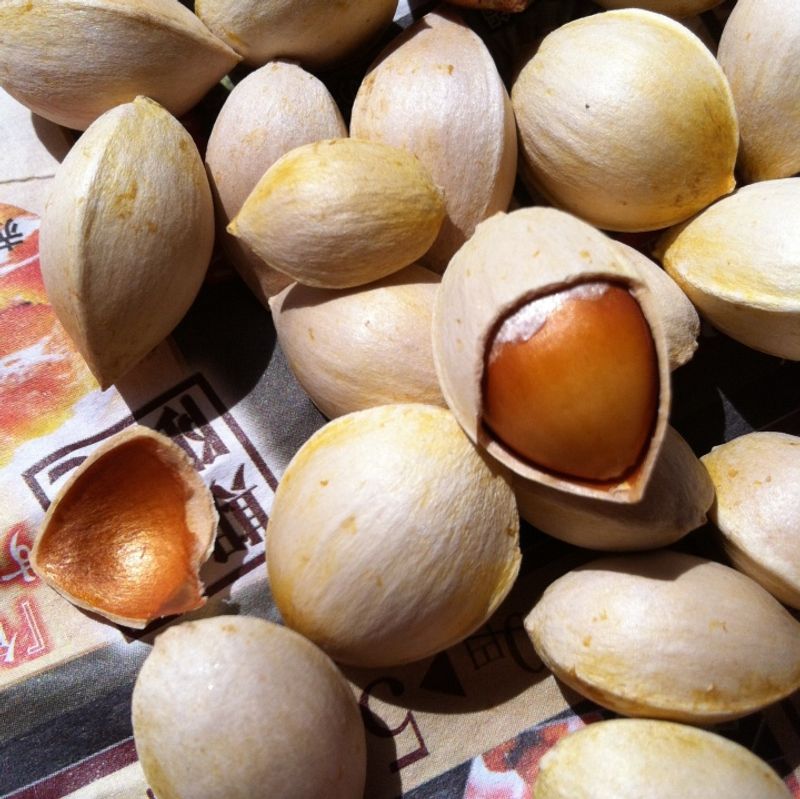
Ginkgo trees are often planted along streets, in parks, and at temples and shrines. If you go collecting, I recommend wearing gloves and mosquito repellent, plus bring a bag or something to keep the nuts in.
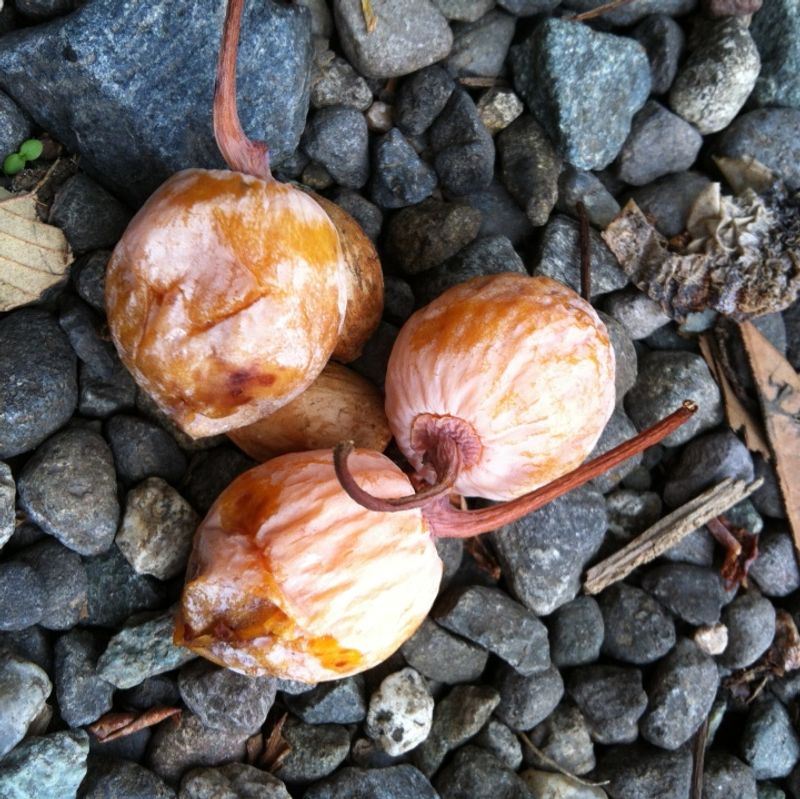
It's October - the season is right. I checked online about the process and headed out to collect ginkgo nuts, or ginnan (銀杏) for the first time. They are stinky fruits or berries and during fall they turn golden and fall off the trees. The fruit is not edible (and too stinky to want to eat), but we collected the almond shaped nut inside. The fruit was squishy so the nuts slid out easily, but the stinky fruit was difficult to get completely off. I read it's easier after the fruits dry out a little.
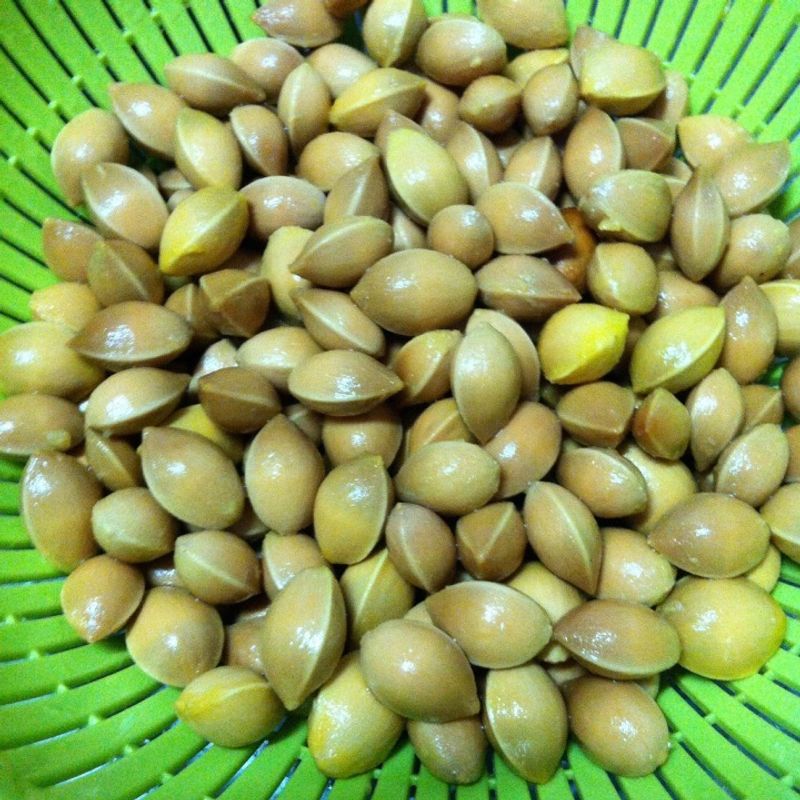
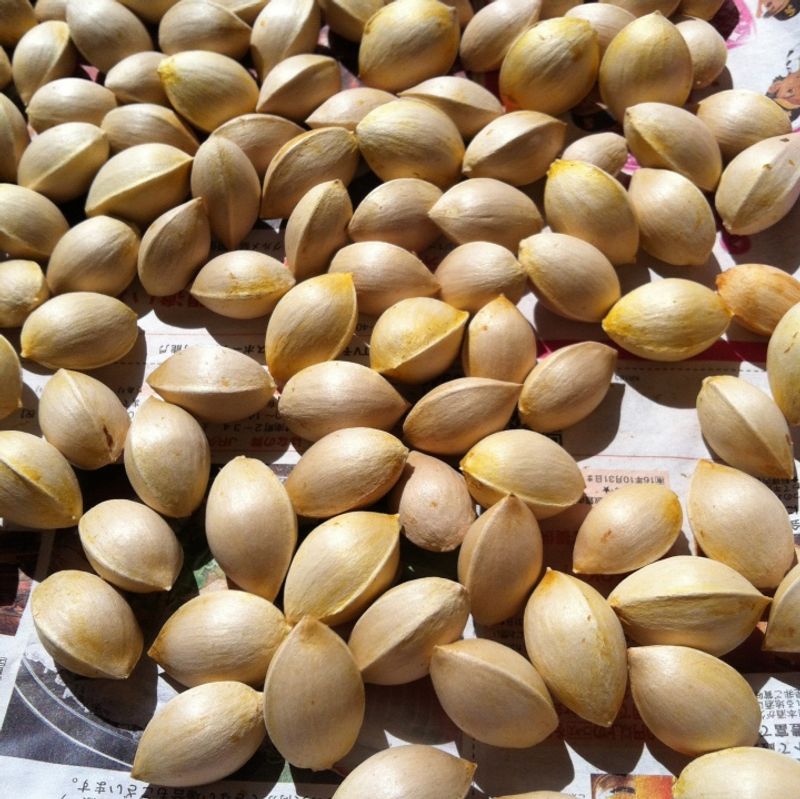
After bringing the nuts home, I spent way too long trying to wash off the stinky fruit part. I'd recommend doing this outside if possible. I put the nuts on some newspaper to dry out for a day or two. The stink reduced as they dried out.
Ginnan can be boiled (about ten minutes) or pan fried (in their shells, sort of like popcorn), but shouldn't be eaten raw. Pop the smooth shells off and use the nuts in cooking or eat with some salt and a beer. You'll be able to find lots of info in English about collecting and preparing them. There are some health benefits but also warnings that some people have trouble if they eat a lot of ginnan. I read that 30 per day for adults and 5 per day for children is the limit, because they somehow stop our bodies from absorbing vitamin B6, despite having a lot of protein.
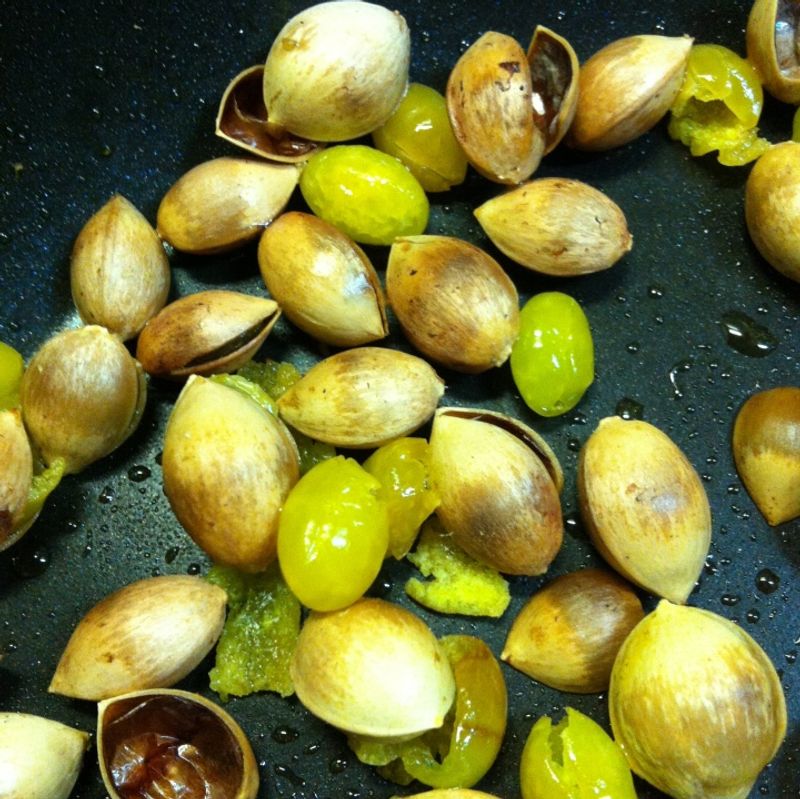
I fried my ginnan with a little olive oil in a nonstick pan with a lid. They made loud pops and some of them flew out of the shells. There is a bronze papery layer under the shell and the nuts are yellow-green. After sprinkling a little salt on the nuts, we ate some with a drink. They are chewy but don't have a strong flavor.
I felt the process was sort of fun and sort of a pain. It's exciting to be able to go out and collect food – old fashioned gatherer style. It takes a bit of effort and tolerance of the stink to collect ginnan, but might be worth it if you know you like them and have a lot of time. I might stick with less stinky and time intensive gathering from now on, but am glad I finally tried it out.
There's an option to buy prepared ginnan at a store (usually still in their shells), which might be the best option, if you want to enjoy this fall food without the smell.



5 Comments
KpQuePasa
on Oct 13
*whew!* you are braver than I - I can't handle how similar those things smell to dog poo, something about picking them up even with gloves on makes me paranoid that smell would be forever stuck on my fingers. Still - what a cool experiment!!! did you have to stake out a "picking area"? I've noticed the obaasans here that collect them get very persnickety when people approach the trees along the road that they have decided are theirs for nut collecting.
DaveJpn
on Oct 13
Thanks for this. I might give it a try myself. It's not something that had occurred to me before. Speaking of picking things off trees, is anyone ever tempted to take some of the persimmon that you sometimes see growing in random places in Japan?
helloalissa
on Oct 13
@KpQuePasa We took our ginnan from trees at a local shrine and only got some glances. I'm sure it depends on the area and type of tree; with ginnan a lot of the neighbors might be grateful for you removing some of the stink. I haven't seen anyone else collecting them in my city (yet). Gotta be careful with things like chestnuts because you know everyone wants those and the obaachan might have invisible territories.
helloalissa
on Oct 13
@DaveJpn I've taken persimmons from trees that aren't obviously on someone's property. Maybe ask the owners if you can take some when they don't seem to be keeping up? We'd get bags of them given to our school when I worked in Saitama so the lunch lady would slice them up and we could eat them almost daily. It seems like a waste to see them falling on the ground everywhere; maybe people just need someone tall/energetic to help out? There are farms with persimmon picking in some areas as well. (But you have to pay for them.)
DaveJpn
on Nov 3
@helloalissa You do see a lot of them around going to waste, don't you?! I really like them, too. I'd never eaten them until I came to Japan.